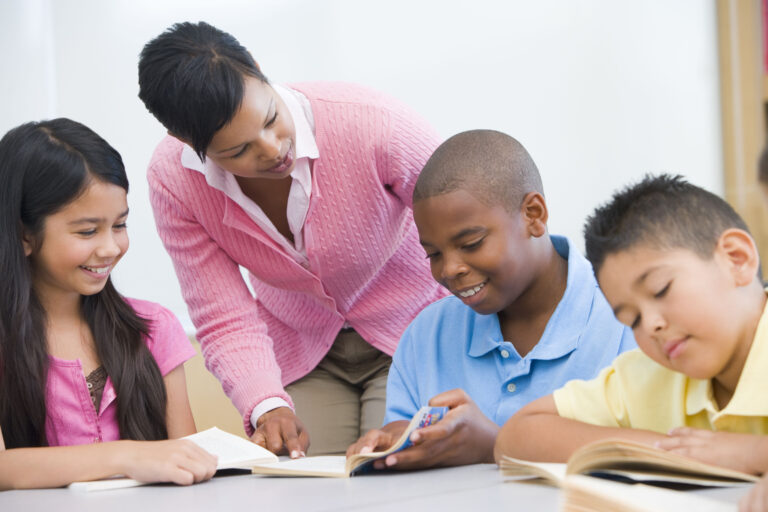
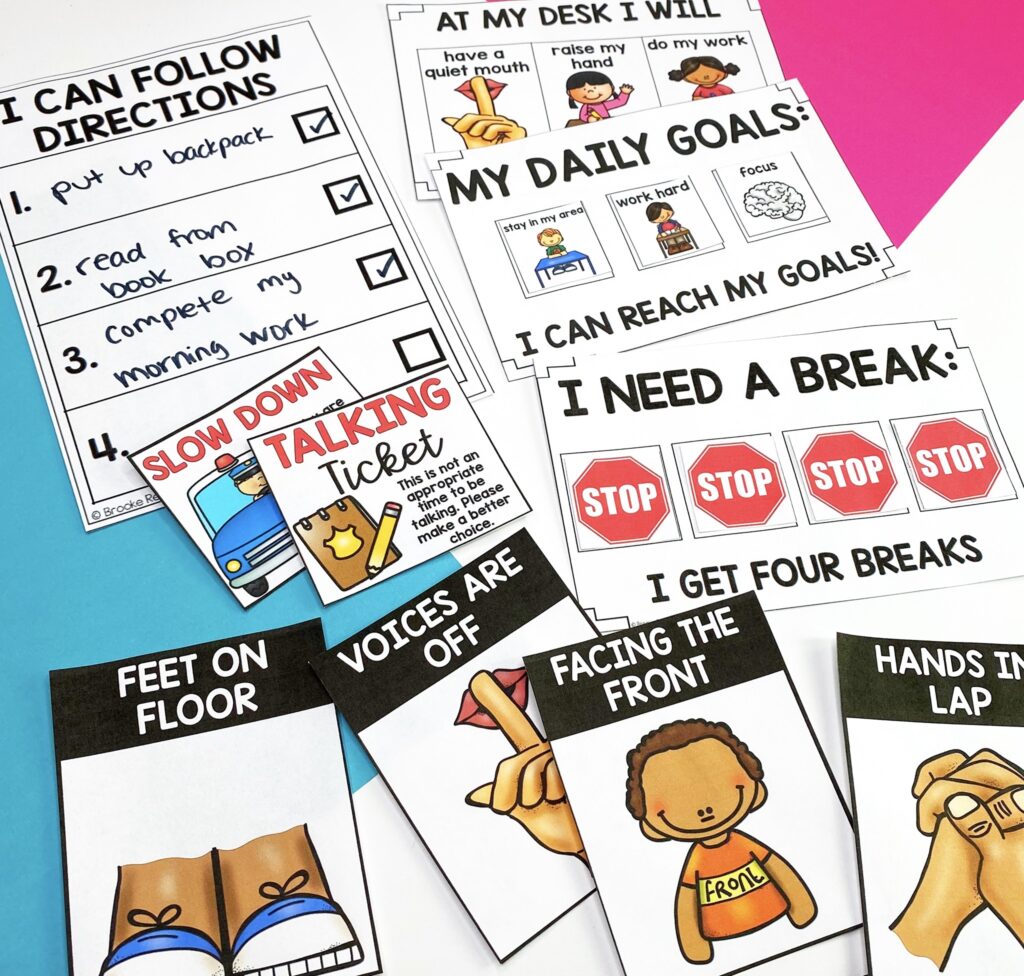
As teachers, we’ve all experienced the challenge of managing students with attention-related issues. Whether it’s ADHD or simply a difficulty staying focused, these students can easily become distracted and struggle to regulate their own behavior in the classroom. But what if there was a solution that could help both the student and the teacher? Enter visual behavior supports. These tools provide visual reminders of behavior expectations and goals, empowering students to regulate their own behavior and stay on track. Let explore some powerful visual behavior supports to help both you and your students!

One visual behavior support that can be particularly helpful for students who struggle with staying on task is the use of break boards for self-monitoring classroom breaks. By providing a visual reminder that it’s okay to take a break and step away from work for a few minutes, students can feel empowered to take control of their own behavior and regulate their own attention.
Break boards can come in many forms, depending on what works best for your students. I prefer using a more interactive approach, such as a board with movable magnets or pieces that students can manipulate. The board above is super simple to use and re-use daily. Simply print, cut out the pieces, laminate and attach Velcro (the Velcro dots are a huge time saving trick.. you can find them on Amazon or Target.) The key is to make the break board a visible and accessible tool that students can turn to whenever they need a little extra support in staying focused.
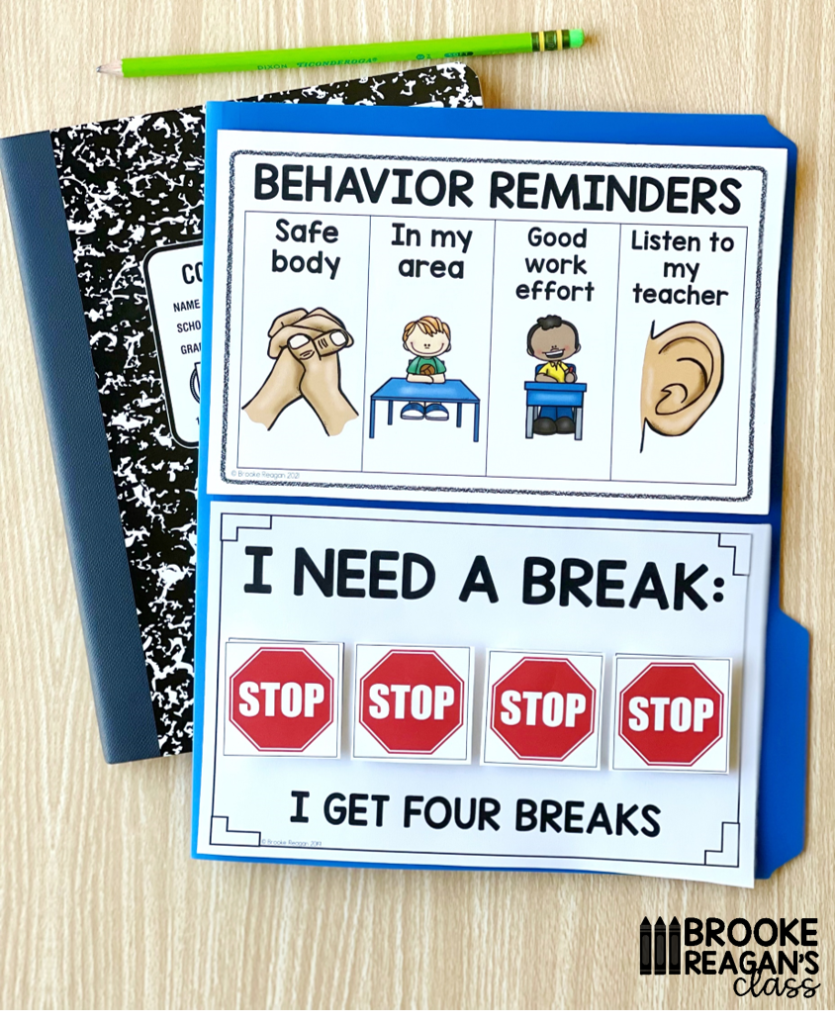
Daily behavior goal visual boards can be an effective visual behavior support for students. By setting clear behavior expectations at the start of each day, teachers can help students focus on achieving their goals and track their progress throughout the day.
These goals can be customized according to the needs of each student. For example, specific behavior goals might include following classroom rules, completing assignments on time, participating in group activities, or showing respect to others. Once the goals are set, teachers can provide students with visual aids to help them keep track of their progress.

Creating a visual goal board for students serves as a non-verbal cue to their behavior goal/ expectation. By providing visual cues, students are able to easily understand the expectations and are more likely to follow them. Visual cues can be especially helpful for students who struggle with verbal communication or who are easily distracted.

Non-verbal cues are an essential visual behavior support tool that helps students understand expectations without direct communication. These cues include gestures, facial expressions, and body language. Non-verbal cues can express approval, disapproval, or even ambivalence, allowing teachers and staff to guide students’ behaviors and intentions subtly.
Non-verbal communication is particularly impactful when a student is experiencing high emotions or in situations when verbal communication may not be effective. For instance, a student who is upset may not be able to understand verbal instructions. In such a case, a simple visual cue card with a student taking a deep breath, sitting down, or taking a break, helps make a significant calming impact on the student.
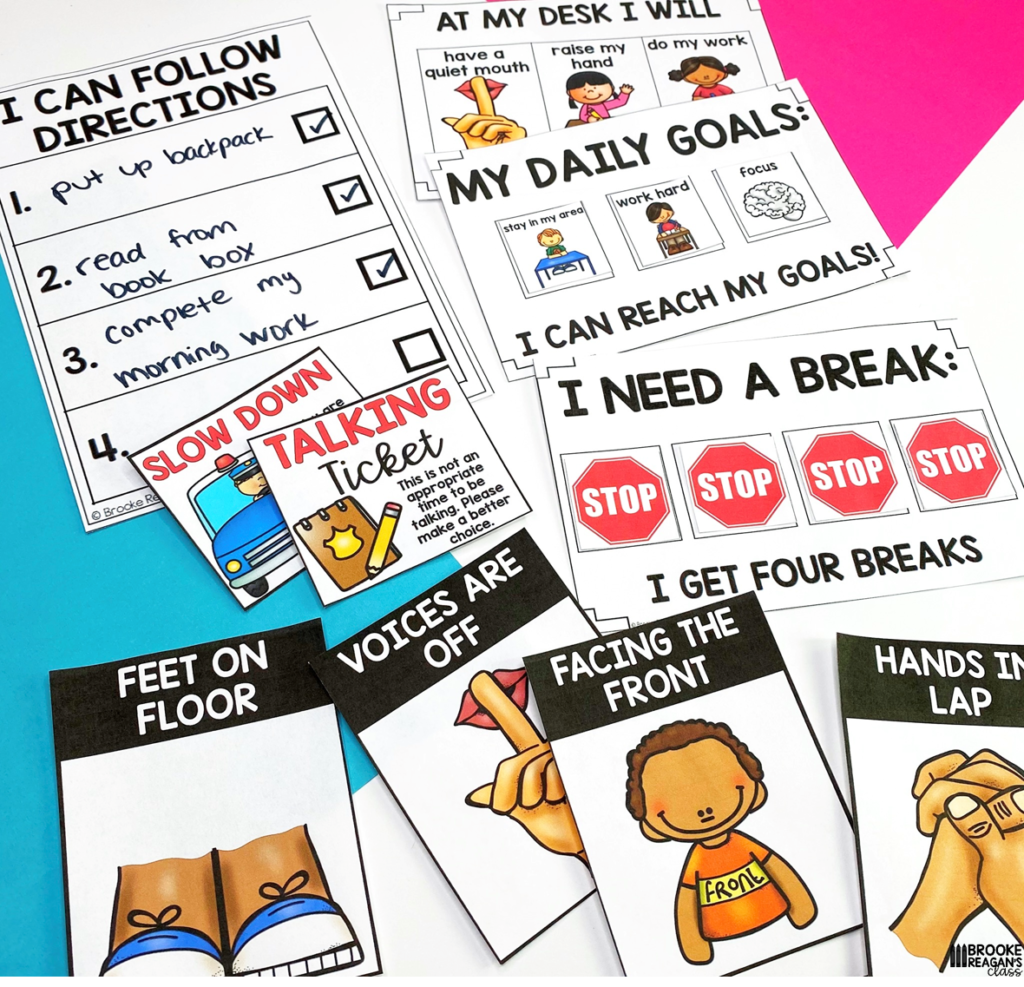
A desk or table spot visual reminder of classroom expectations and behavior goals is a valuable tool for promoting positive behavior in the classroom. It provides students with a quick reference for what is expected of them, and can also serve as a reminder of the goals they are working towards. When used in conjunction with other visual behavior support tools, it can help to create a more positive and supportive learning environment for all students.
Check out my Visual Behavior Supports HERE and start using it today in your classroom with your students!
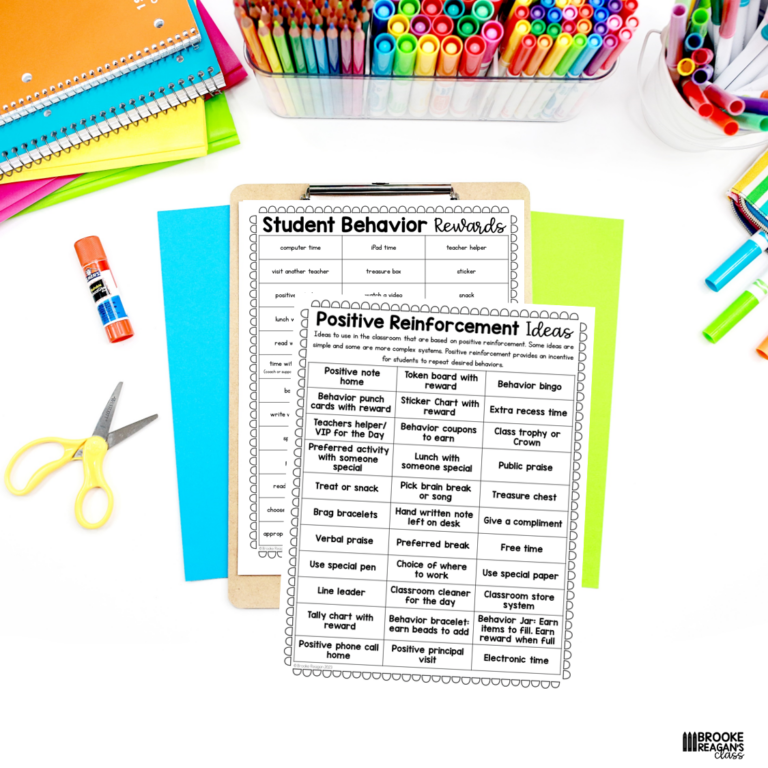
Sign up to receive over 35 ready to use student rewards to boost motivation, promote positive behavior and create a fun learning environment.